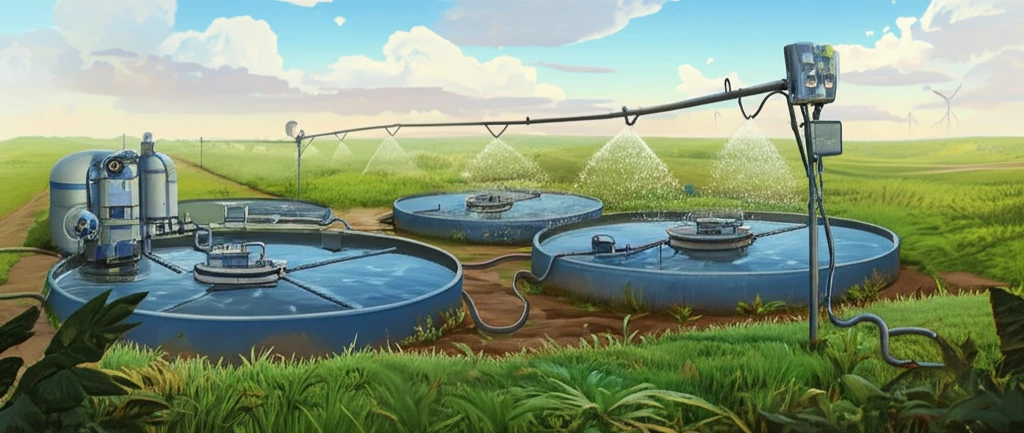
Drip Irrigation Revolution: How Swine Wastewater Could Be the Future of Sustainable Farming
"Explore the groundbreaking research on using treated swine wastewater in drip irrigation and discover how it can lead to more sustainable and efficient agricultural practices."
In recent decades, Brazilian pig farming has seen remarkable technological advancements aimed at boosting productivity and cutting production costs. Integrating swine manure management systems into agriculture, when done right, is a game-changer that improves soil quality by adding organic matter. In this way, farms benefit, reduce dependence on synthetic fertilizers and create a richer environment for crop development.
Localized irrigation, or drip irrigation, is praised for its high efficiency and low contamination risk, making it perfect for delivering treated wastewater. This system ensures water and nutrients are absorbed directly where needed, protecting both crops and field workers.
While drip irrigation offers undeniable advantages, it's also notoriously susceptible to clogging. The risk of clogging is dependent on emitter characteristics (ZHANG et al., 2010) and the physical, chemical, and biological properties of the water used (CUNHA et al., 2006; DAZHUANG et al., 2009).
Unlocking Efficiency: Understanding Swine Wastewater's Impact on Drip Irrigation Systems

A pivotal study examined how varying the proportions of swine wastewater and clean water during irrigation affects emitter performance. The research was conducted using a split-plot design where different irrigation schedules were tested. These schedules included alternating hours of swine wastewater (ARS) and clean water (AA) to determine their impact on flow rates and clogging.
- 1E3A: 1 hour of swine wastewater followed by 3 hours of clean water
- 2E2A: 2 hours of swine wastewater followed by 2 hours of clean water
- 3E1A: 3 hours of swine wastewater followed by 1 hour of clean water
- 4E: A continuous 4-hour application of swine wastewater
Practical Strategies for Implementation
The combination of specific emitters (G1 and G3) with particular irrigation schedules (1E3A and 4E) proved most effective in reducing clogging. These optimized systems experienced minimal flow rate reductions after 160 hours of operation. These findings offer practical insights into managing drip irrigation systems using swine wastewater, ensuring efficiency and sustainability.
